Building a Regenerative Community on the Jalama Canyon Ranch
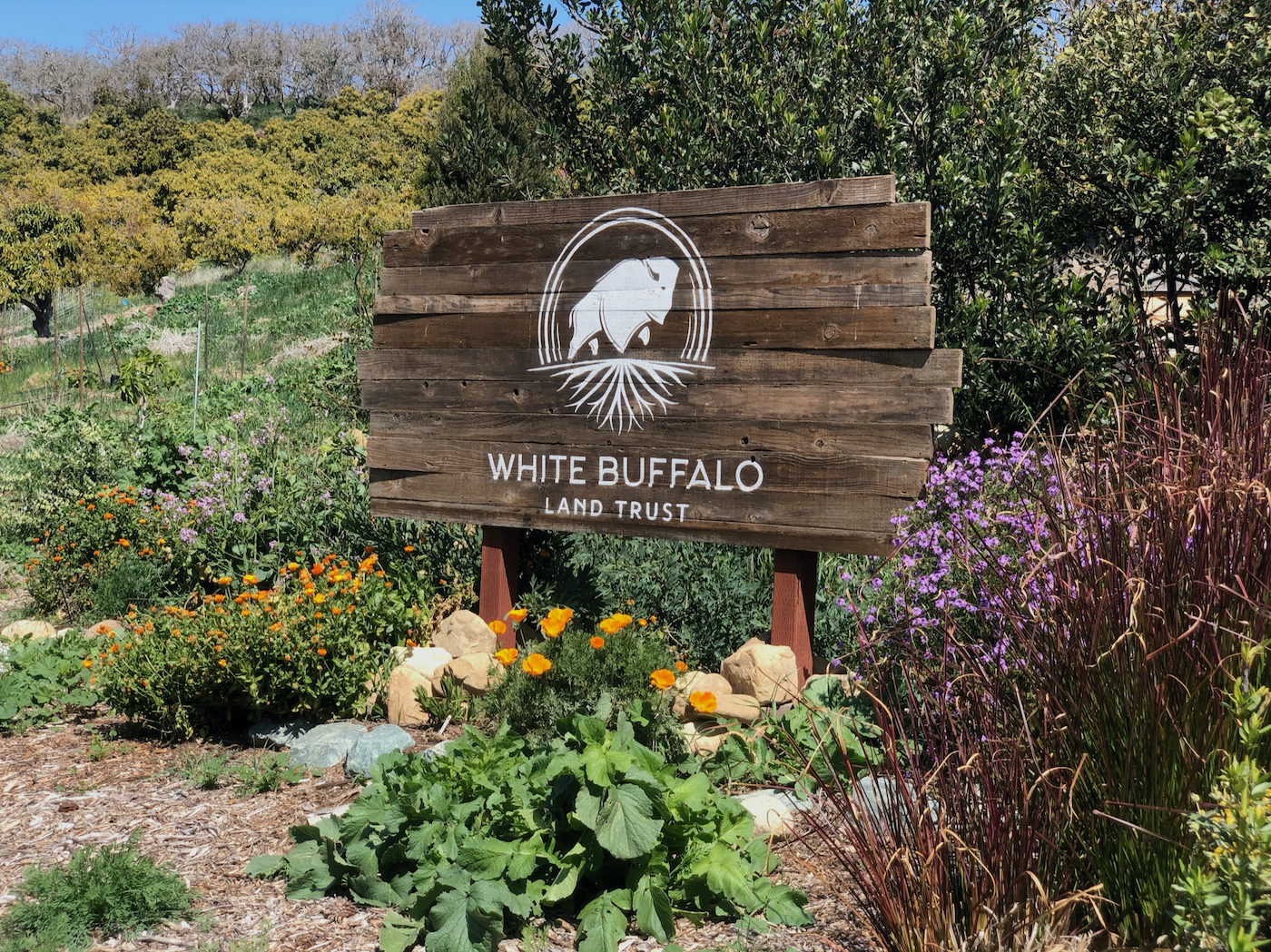
Regenerative agriculture incorporates a variety of pre-modern farming techniques like no-till farming and intensive grazing to help revitalize the surrounding ecology, increase biodiversity, and counteract climate change through carbon sequestration, among many other benefits. While these practices have a noticeable impact on the land, there is still a need for more educational programs and formal research projects to provide the scientific data needed to quantify these effects.
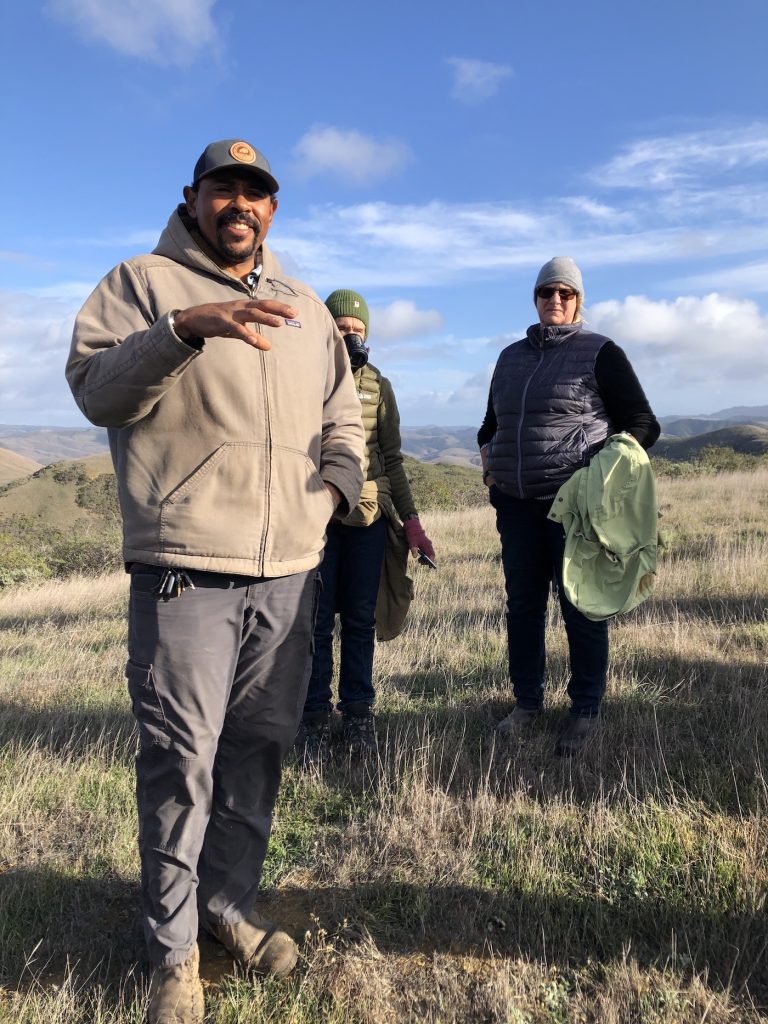
The Jalama Canyon Ranch is just the latest extension of the impactful work in regenerative agriculture already done by the White Buffalo Land Trust (WBLT) since its founding in 2018. After a successful $6 million campaign to acquire the property in April of this year, the White Buffalo Land Trust has already begun to put the land to good use. Filled with this area’s distinctive oak woodland, this 1,000-acre ranch has grazing lands, a vineyard along with other areas for orchards and crops, plus a range of structures on site including several cabins for staff and visitors. These facilities also help house their Center for Regenerative Agriculture where research and hands-on education can take place. The grounds are overseen by Jesse Smith, Director of Land Stewardship for White Buffalo, who lives on the ranch with his wife and WBLT Project Director, Ana Smith.
“We really were working to clearly articulate to the multitude of stakeholders that contributed, the values and many different doors in which this property would open up opportunities for students of all ages: from farmers and ranchers to food service providers, educators and policy professionals, to healthcare providers,” said Smith. “All of which saw that the intersection of their work, health, and lives were linked to agriculture and there was some aspect of that needed to be regenerative. The Center for Regenerative Agriculture here at Canyon Ranch is really an opportunity for all to engage in this field of work.”
The ranch’s blend of oak woodland, grazing lands, and potential crop plots make it the perfect pilot project for studying how these techniques done on a large scale affect the micro processes taking place in the soil and surroundings.
Aarushi Jhatro, the new ecology and GIS manager for White Buffalo, said that Jalama Canyon Ranch is a watershed, meaning that all of the water that falls and flows within the ranch comes out through one point. This provides a great opportunity to study the impact on the water cycle that these regenerative practices have.
“Stream flow is kind of the ultimate expression of all the hydrologic processes in the background,” Jhatro said. “We’re also looking at soil moisture, which overlaps with carbon sequestration. There is a lot of relationship between organic carbon in the soil and how the soil then acts as a sponge for water. So, we’re going to be measuring our carbon sequestration in grasslands that we’ll be tracing through this holistic management.”
With the land only recently coming under their stewardship, the first task is to establish baseline data for the property. In addition to the field measurements, they will be taking, Jhatro is helping incorporate satellite data to provide details on the macro scale. By knowing where the land stands at the moment numerically, they can track the effect that different practices have on the ranch.
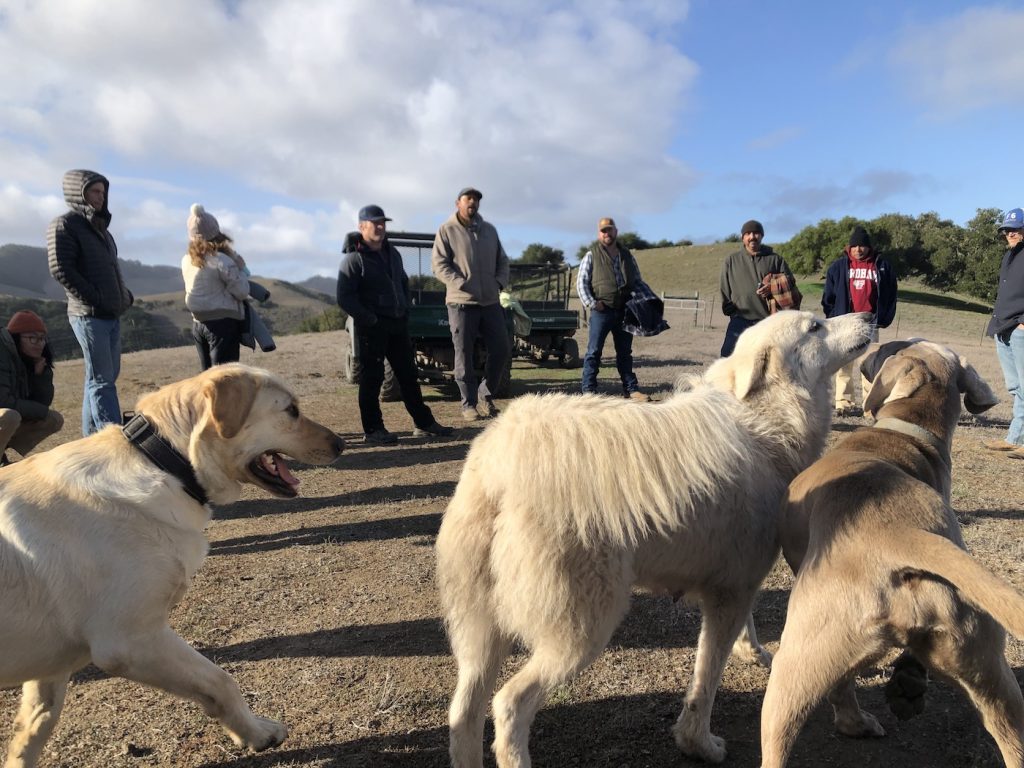
“We’re collecting data with three prime objectives. One of them is to inform our management,” Jhatro said. “A second one is to actually do deeper insights and gain an understanding of what the outcomes of the practices are — and why they are the way they are — and then the third is free data for public facing content.”
This infield data and satellite information will be combined into an integrated geospatial information system (GIS) accessible to the public. This data will go to not just help inform their own best practices, but will assist in communicating to other parties the impact and benefit of regenerative agriculture practices with quantifiable metrics to support their message.
“The goal is to have all of that [data] streamed to the GIS platform so we have a way for us at White Buffalo, our stakeholders and the public to be able to access this data and look at it in a spatially variable manner, looking at how certain parameters change through time at different places in the ranch,” Jhatro said. “It gives us the ability to also look at the variability in practices with variability in factors like topology and vegetation.”
This data model can assist researchers as well as other land stewards trying to adapt these practices to the specifics of their own land.
The organization’s new Director of Education and Research Ann Close explained, “We really want to quantify these practices. Some of these things are just too abstract. If we’re doing better, are we doing 20% better? Five percent better?”
After 25 years as the Associate Director at the USC Wrigley Institute for Environmental Studies at Catalina Island, Close was getting ready for retirement when she discovered this opportunity, and it was too good of a project to pass up. For her it was a natural transition from focusing on carbon sequestration in the ocean to that in land since these systems are all interlinked in the planet’s water cycle. In addition to guiding the onsite projects, one of Close’s roles is to help build the relationship between the ranch and researchers. While speaking with the marine biology department at UCSB, she learned that one of the biggest hurdles to researching holistic practices is access to land. The Jalama Canyon Ranch can serve as this access point to public and private universities, serving as a research site for projects other than its own.
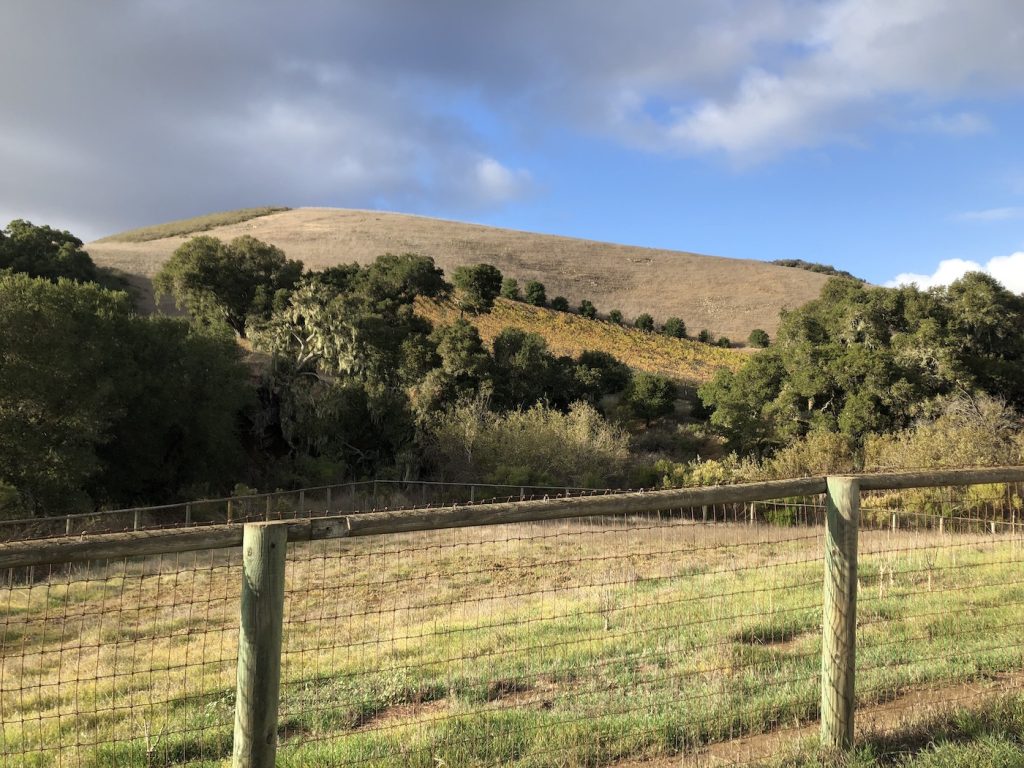
With the academic partnerships still blossoming, their own work has already begun on the ranch. In the vineyard, they have switched to a no-till plan, using an organic system of groundcover to combat weeds and pests that leaves the soil less perturbed and is thought to help with nutrient retention and water infiltration in the soil. They have begun to look at soil nutrient availability and the irrigation water profile, tracking these characteristics in tissue samples as they move the soil through the plant and into the leaves. By monitoring the vineyard, they will be able to understand what the vine needs, but also quantify the impact these practices have on the plants.
Another project will be to monitor oak health, looking at how understory management affects the trees. With around 400 acres of the ranch being grazing lands, one of the largest data monitoring and collection points will be the tracking of holistic livestock management techniques like intensive grazing. With all of these projects, the goal is to develop practices that help shift the land to be more drought (and hopefully fire) resilient. Jesse adds, “We are very excited to demonstrate what the potential of this property is under our land stewardship, but the purpose and the impact of our work here – both through our land stewardship, as well as our education and our training and programs – is so that we can help influence acres and communities, other organizations and entities, beyond the boundaries of this property and of White Buffalo Land Trust as an organization.”
That is what the 10-day Holistic Management Intensive recently held at Jalama Canyon Ranch is doing. While White Buffalo has offered this annual course several times in the past, this is the first time they’ve been able to host it on a property under their direct stewardship. This class is also accredited by the Savory Institute, which helps promote holistic management and regenerative agriculture on the global scale. The intensive blends classwork with outdoor, hands-on learning, covering everything from financial and land planning to the ecological monitoring of their property, with a holistic approach that guides students to decisions that are economically, environmentally, and socially sound.
Over the years, this course has helped teach local ranchers and farmers, but also those who work with policy at the county level, or even from that outside of the region. Brian Hightower, who attended the intensive this year, is from the Aspen Valley Land Trust, a 46,000-acre preserve in Colorado. He recently changed from being their Education Outreach Director to helping manage Coffman Ranch, a 140-acre ranch acquired by the land trust earlier this year. He discovered regenerative agriculture and this course through the Savory Institute during his due diligence. Since Hightower does not come from a ranching background, he was looking for guidance on the practicalities and specifics of running a ranch like animal concentration and stocking rates.
“It’s a little daunting sometimes — when you think about all those moving parts — but really what you’re talking about is just doing the job of stewardship, doing what’s best for the land, what’s best for the community at any given time, and then it yields these byproducts, which aren’t necessarily things that need constant oversight,” Hightower said.
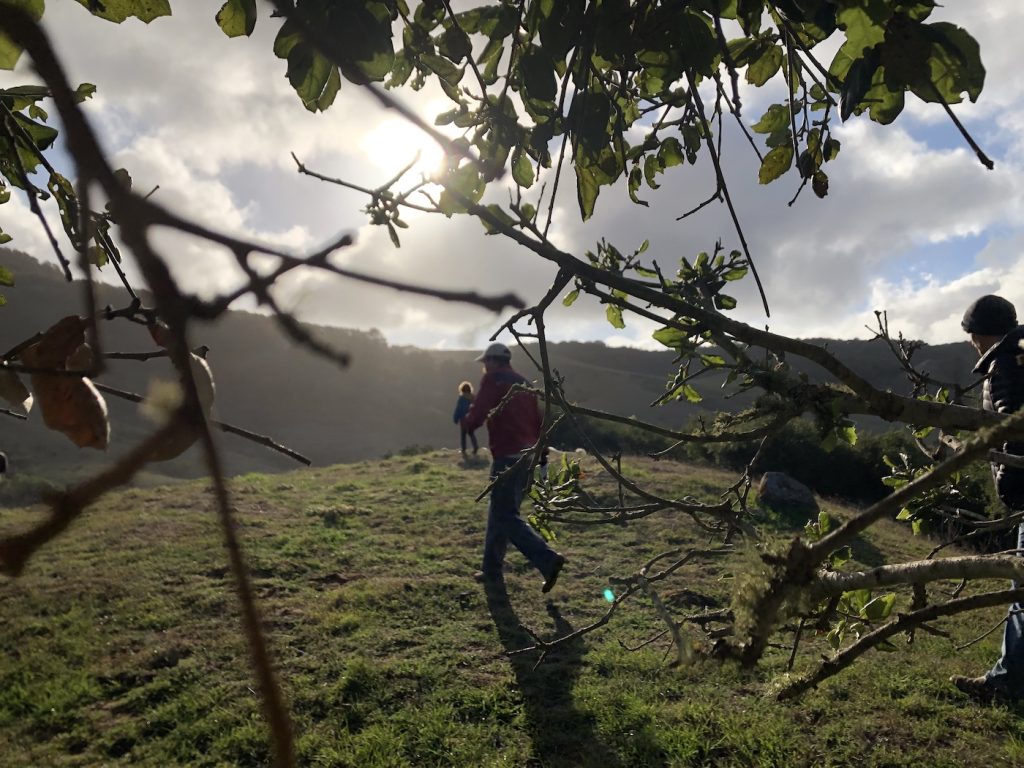
Hightower views land stewards as community builders. Healthy microbial communities in the soil help build healthy crop communities which support the surrounding ecological and animal communities. All these work in tandem to give back to the public, supporting it by putting calories, and even potentially jobs, back into the community. This course has provided him and the other students an opportunity to build another type of community.
“One of the hardest things to do in any profession is to create a resource base of people that you can lean on when you run into a brick wall, or when you run out of options or ideas,” Hightower said.
“To have industry professionals and some of the most prominent people in the regenerative agriculture landscape here is really great for everybody involved. I’ve now known Jesse and Ana for four days and I just can’t think of anyone better to execute the vision here than those two. It’s just such an absolute power couple.”
On this day, the students had just come down from the large barn on the property, its second floor having been converted to a comfy classroom setting. Their morning lesson had covered holistic financial planning, looking at the economics around everything from land purchasing, easements, and upkeep costs, to crop viability and business opportunities – this was a new particular point of interest for Hightower. He notes that a holistically managed property still needs to be economically viable. This way it can be an additive resource for the community that also preserves and revitalizes the land. The students paused for a lunch of Buddha Bowls and warm drinks on the cool, grey day. After the meal, everyone made their way up a trail to one of the property’s peaks.
Standing on the windswept hilltop, Smith pointed out the different water sources and storage tanks surrounding us as the ranch dogs frolicked for pets between the students. This is the kind of hands-on experience that the students sign up for and the property is perfectly set up for this kind of immersive learning.
As Smith puts it, “We feel like this is a place of gathering, a base of community building, and a place where we can catalyze action beyond our own organization.”
With Jalama Canyon Ranch under the White Buffalo stewardship for less than a year, this course marks the first of their educational programs they will host onsite.
“This intensive is just one of the programs that our organization has planned for different education and training offerings for a diverse cross-section of our community, going into, not only the next calendar year but also looking out into the future,” Smith continues, “This is everything from the more focused kind of training and education around livestock, viticulture, riparian restoration, mushrooms and mycology, the culinary arts and wild foraging, as well as how we monitor and collect data in service of a deeper understanding of our ecology and ecological functions.”
With so many projects already taking place, as Jalama Canyon Ranch continues to grow, so will its impact on the community.







You must be logged in to post a comment.